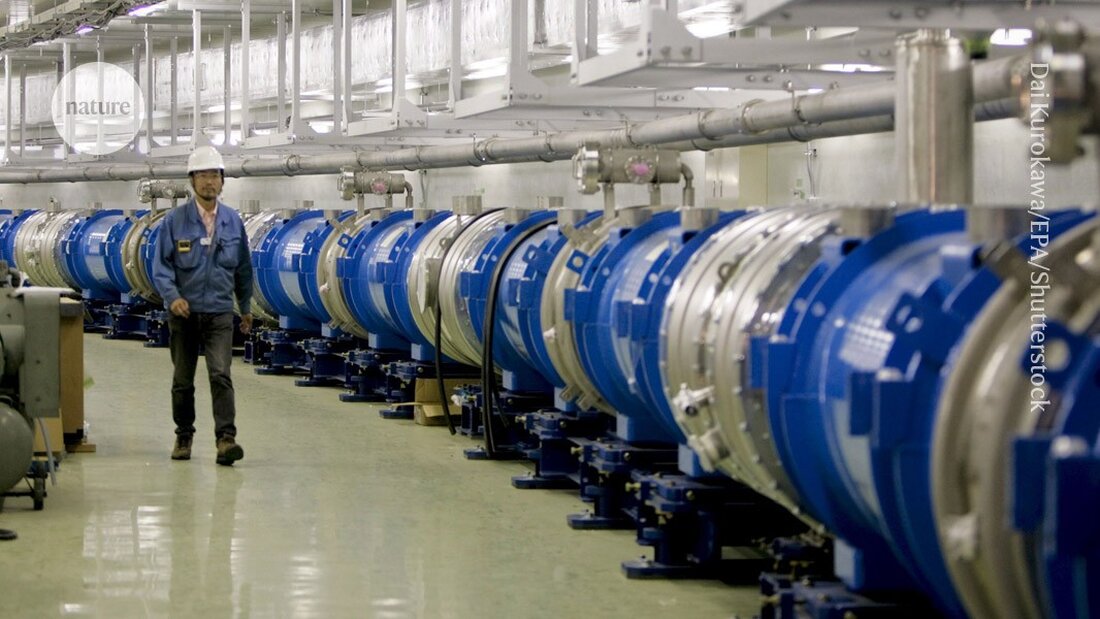Physicists tame fundamental muon particles into a precisely controlled beam
Researchers in Japan have accelerated unstable muons into a precisely controlled beam for the first time, marking a milestone for future muon colliders.

Physicists tame fundamental muon particles into a precisely controlled beam
For the first time, researchers have accelerated muons - the heavier, unstable relatives of electrons - in a tightly controlled beam, bringing the vision of a muon collision one step closer to reality.
A team at the Japan Proton Accelerator Research Complex (J-PARC) in Tokai aimed a laser at a stream of muons to bring the fast-moving particles to a near standstill. The researchers then applied an electric field to accelerate these “cooled” muons to about 4% of the speed of light. The results, which have not yet been peer-reviewed, were published on October 15 on the preprint server arXiv 1.
This achievement is a “big step forward” in the approach needed to achieve one Muon collider to build. Such a collider could be used to make the extremely sensitive measurements needed to uncover new physical phenomena. It would be smaller and potentially cheaper to build than other particle colliders, said Tova Holmes, a particle physicist at the University of Tennessee in Knoxville.
Muons are short-lived elementary particles that are almost identical to electrons but have more than 200 times their mass. Over the past decade, there has been increasing movement toward a compact muon collider that could rival or even exceed the energies achieved by giant proton and electron colliders such as the 27-kilometer-long Large Hadron Collider at CERN, the European particle physics laboratory near Geneva. A 10-kilometer-long muon collider could produce particles with as much energy as those from a 90-kilometer-long proton machine, because muons are elementary particles whose entire energy goes into each collision. In contrast, proton collisions occur between the constituent quarks.
However, accelerating muons is extremely difficult because they only exist for about 2 microseconds before converting into an electron and two types of Neutrinos disintegrate. They also move in different directions at different speeds, making them difficult to tame into a narrow, high-intensity jet. Although researchers have accelerated muons before, the beams are "very divergent," says study co-author Shusei Kamioka, a particle physicist at the High Energy Accelerator Research Organization in Tsukuba, Japan. This makes the beams too unpredictable to be used for sensitive measurements.
To overcome this hurdle, Kamioka and his colleagues shot a beam of positively charged muons, the antimatter counterpart of muons, called antimuons, into silica airgel — a sponge-like material often used as thermal insulation. When the positive muons collided with electrons in the airgel, neutral atoms of “muonium” were formed. The researchers fired a laser at these atoms to sever their electrons, turning them back into positive muons that were nearly frozen. This cooling process caused the particles' speeds and directions to become more uniform.
The researchers then used an electric field to accelerate these slowing muons to an energy of 100 kiloelectron volts, reaching a speed of about 4% of the speed of light.
Although the results are promising, there is still a long way to go before muon collision becomes a reality, says Holmes. The approach would need to be scaled up to produce even narrower, higher intensity beams, she adds.
Kamioka said he and his colleagues are developing the technology needed to accelerate muons to 94% of the speed of light and hope to achieve this by 2028. “This is our next milestone,” he says.
In addition to building a future collider, physicists could use high-energy muon beams in experiments that go beyond the Standard Model of particle physics, such as precise measurements of muons' mysterious magnetism — which is stronger than theoretically predicted, Kamioka said.
-
Aritome, S. et al. Preprint at https://doi.org/10.48550/arXiv.2410.11367 (2024).

 Suche
Suche
 Mein Konto
Mein Konto
